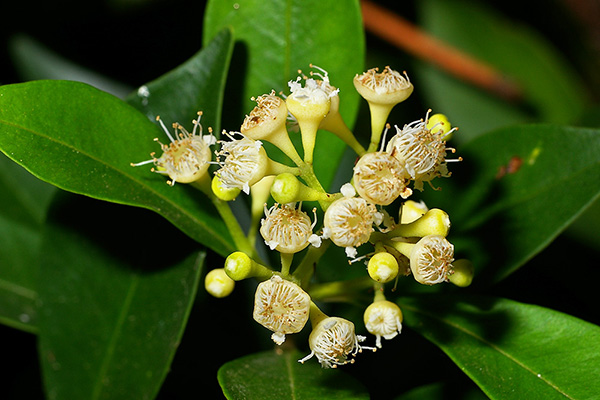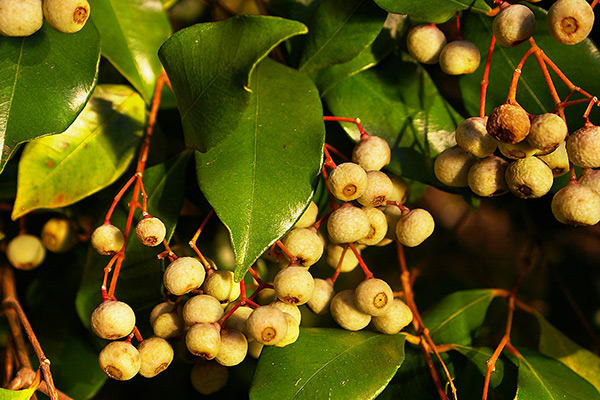General Description:
Syzygium is a genus of over 1000 species occurring in tropical and subtropical rainforests. There are about 50 species in Australia occurring in the Kimberly region of Western Australia, the Northern Territory, Queensland and northern New South Wales. The genus includes species previously classified in the genus Acmena as well as a number previously classified as Eugenia. Many of the species are known as lilly pillies.
Syzygium smithii has been in cultivation for many years under its former name, Acmena smithii.
In nature, Syzygium smithii is usually a medium to large tree reaching 15 – 20 metres in height. However, in cultivation it is usually a dense-foliaged, medium tree of about 8 – 10 metres high by 6 metres wide. The leaves are glossy green, lance-shaped to elliptical, about 50 — 100 mm long by 10 – 50 mm wide and tapering to a point. The flowers are creamish/white and occur in clusters at the ends of the branches in spring and summer. They have a fluffy appearance due to the numerous long stamens but are not especially attractive, horticulturally. The flowers are followed by fleshy fruits, white to purple in colour and about 10 – 15 mm in dimeter. The fruits are edible but not particularly palatable.
This is a very hardy plant in cultivation, adapting to a range of climates from tropical to temperate and to most reasonably well drained soils. It will grow in full sun or fairly heavy shade. In an open position it usually retains foliage to near ground level. Several cultivars have become available, usually varying in growth habit:
- Variety ‘minor’ – grows to about 3 – 3.5 metres.
- ‘Hot Flush’ is a relatively new introduction with a moderate growth habit and reddish new growth.
- ‘Hedgemaster’ – low growing form to about 1 – 1.5 metres.
- ‘Red Tip’ – grows to about 6 metres and has flushes of burgundy new growth.
The species is resistant to at least moderate frosts and tolerates extended dry periods once established, although it will have a better appearance if adequate water is available.
The plant responds well to pruning and can be used as a tall hedge.
The most serious pest of lilly pillies is the lilly pilly psyllid (Trioza eugeniae). This can cause disfiguring pimples on the leaves of susceptible species. Fortunately, Syzygium smithii is rarely affected by this pest.
Propagation is usually carried out from fresh seed, either by sowing the fruits whole or after removing the flesh. Germination may be slow and spasmodic. The species can also be grown from cuttings of firm, current season’s growth.

Flowers of Syzygium smithii
Photo: Brian Walters

Fruit of Syzygium smithii
Photo: Brian Walters
 Australian Native Plants Society (Australia)
Australian Native Plants Society (Australia)